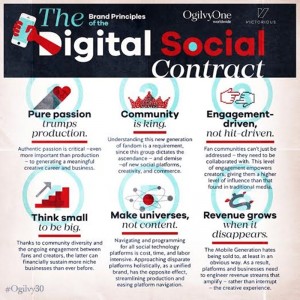The nation’s biggest teachers’ union is in a stalemate with its own employees at the worst possible time
The NEA’s six-week lockout of its employee union is delaying its ability to rally its members behind former member Tim Walz.
In early July, amid contract negotiations, employees of the National Education Association (NEA) went on strike for three days. But rather than push the nation’s largest labor union to engage with its staff on a new contract, the strike began a standoff that has been going for six weeks and counting.
The NEA works with its 3 million members to support their collective bargaining efforts—including strikes when necessary—and pushes for pay raises, better benefits, and improved working conditions for educators.
But the NEA’s response to its own 300-plus employee union, the NEA Staff Organization (NEASO), has included the anti-union tactics it typically opposes. The Wall Street Journal said NEA itself would call its actions actions “sadistic,” and NEASO members say it offers a model of hardball tactics that other employers could use to quash organizing efforts. Additionally, the dispute is delaying critical get-out-the-vote efforts to support Vice President Kamala Harris and her running mate, Minnesota Governor Tim Walz—a former teacher and NEA member.
NEASO members timed their strike to NEA’s largest annual event, its representative assembly held July 4-7. With NEA employees on strike, President Joe Biden wouldn’t cross the picket line and canceled his scheduled speech. In response, the NEA took the drastic measure of locking out its own union on July 8. That prevents employees from working until they agree on a contract and resulted in picket lines at its Washington, D.C. offices.
Since then, employees say the organization has brought in scab labor and briefly threatened to revoke workers’ health insurance at the end of July if they didn’t agree to the terms of a contract NEASO found unsatisfactory.
NEA and NEASO announced a tentative agreement on Aug. 15, but it still needs to be ratified. Employees who spoke to Fast Company for this story did so before the tentative agreement was reached. In a statement to Fast Company, an NEA spokesperson said: “Due to confidentiality agreements, we cannot comment at this time beyond the joint press release issued by NEA and NEASO.”
NEASO members say the lockout is causing NEA to miss a consequential moment in the lead up to the election. According to NEASO, one in 28 voters come from an NEA household, and voter participation from those households is almost 25% higher than the general public. With Walz on the Democratic ticket, the union has a mandate to maintain enthusiasm and step up its typically robust get-out-the-vote efforts. (In addition to his support of public education, Walz was the preferred VP choice among labor leaders, in part because of his track record of backing pro-worker laws and being a presence on picket lines.)
When Walz was announced as the VP nominee, NEA sent out a press release about him that employees say was done by scab workers. With the election kicking into high gear, Erin Wagner, an NEA senior digital strategist who has been at the organization for more than six years, says employees should be at the Democratic National Convention this week. NEASO also notes that there hasn’t been polling of NEA members to identify important campaign issues while workers are locked out.
“I mostly just feel a lot of anger and sadness that we’re missing so many moments,” said Wagner. An election—particularly one in which a new candidate comes in at such a late stage and picks a former NEA member as running mate—is an “all hands on deck effort.” Wagner says the organization is missing an opportunity to educate voters about the presidential candidates, as well as pro-education candidates down the ballot.
That’s typically the work of NEA’s Education Votes website, which includes a tool for comparing candidates’ records on education and labor. “I can’t imagine they have updated that,” says Wagner, who works on the site. There was also a tool in the works to help people check their registration status and request absentee ballots, as well as create sample ballots that included candidates all the way down to school board races. As of Tuesday, the Education Votes site features a page with NEA’s recommended candidates by state, but it does not feature national candidates, and clicking its “2024 Election” link returns an error message. The vote-planning feature appears to be live.

That focus on down-ballot races is particularly critical amid ongoing attacks on public education. During his interview with X CEO Elon Musk on Aug. 12, former President Donald Trump repeated his desire to “close up” the federal Department of Education. The lockout prevented any action from NEA, even as another union, the United Auto Workers, filed federal labor charges against Trump and Musk for comments in the interview that it alleges threaten workers who engage in protected activity.
“We see Donald Trump, who’s appealing to the worst people in education policy, and we’re on the sidelines,” says Justin Conley, a seven-year NEA employee. During the lockout, not working meant “not doing our jobs sharing why it’s so important that we elect pro-public education, pro-labor, pro-worker lawmakers.”
Conley notes that the lockout sets a dangerous precedent. On the picket line, a state-affiliated staffer told him that school districts and business are paying attention to the tactics NEA is using against NEASO. “So NEA can do this to us, [they’re] basically saying anybody can do it to any worker,” Conley says. He says right now, we’re in a “beautiful moment” in which labor unions are more popular now than ever, citing Starbucks workers, Amazon workers, and more who are fighting for fair contracts. “I can see someone be like, ‘Why can’t I do this to my workers, when the largest union in the country can do it to theirs?’” he says.
That’s among the reasons that NEASO’s commitment to securing a fair contract—and demanding that NEA uphold its “union values”—is especially impactful. With the DNC underway and less than 80 days until the presidential election, the stakes of ensuring workers can return to their jobs are high.
Right now, workers are continuing to show up on the picket line, organize, and fight to do their jobs with a fair contract. They want stay, Conley says, because they love what they do. “We love the members, we love fighting for public schools and the students that they serve,” he explains, adding that it’s much like what happens to educators: People take advantage of how much they care about the work they do. “We love what we do. We wouldn’t be fighting this hard if we didn’t.”
ABOUT THE AUTHOR
(4)
Report Post





